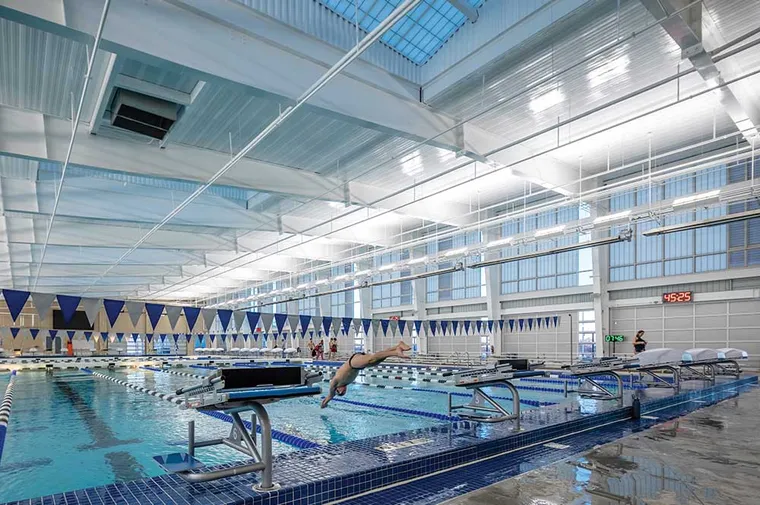The future of aquatic-center design
While swim meet and water polo athletes focus on agility, speed, and performance, they rarely pay attention to the pool in which they compete. After all, they know it will always be heated to a consistent 81 degrees, fully cleaned, and tested, allowing swimmers to race at their highest level.
But for Texas-based Kirksey Architecture, the overall look and feel of the new Round Rock ISD Aquatic Center in Texas was essential. The 53-year-old firm has an enduring ethos to bring sustainable components to all its projects, from offices to K-12 campuses. And when the school district asked the firm to design a highly sustainable, competitive aquatic center, the design team jumped at the opportunity to create another passively ventilated facility.


